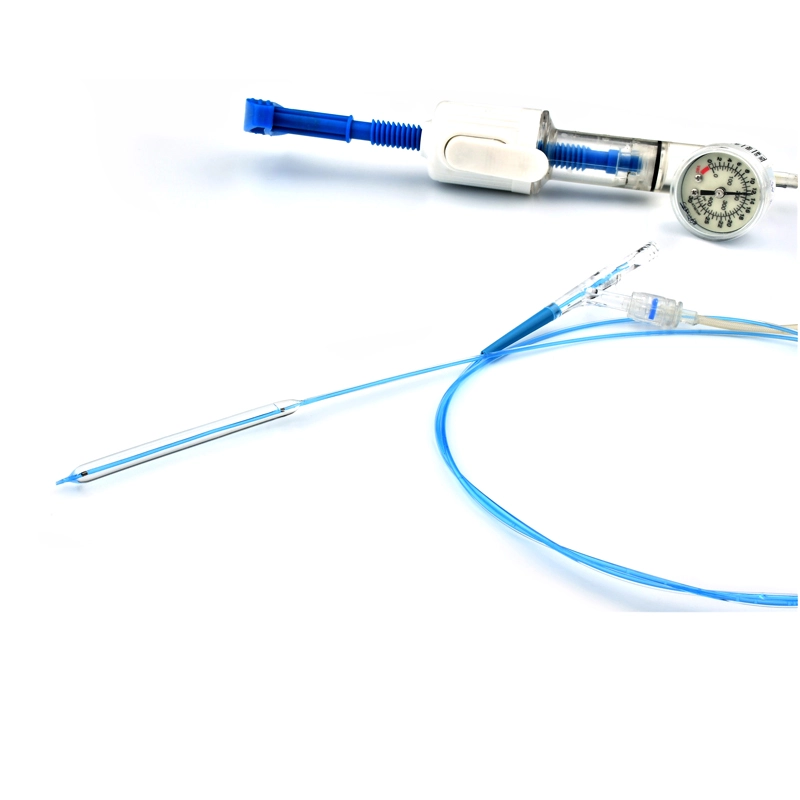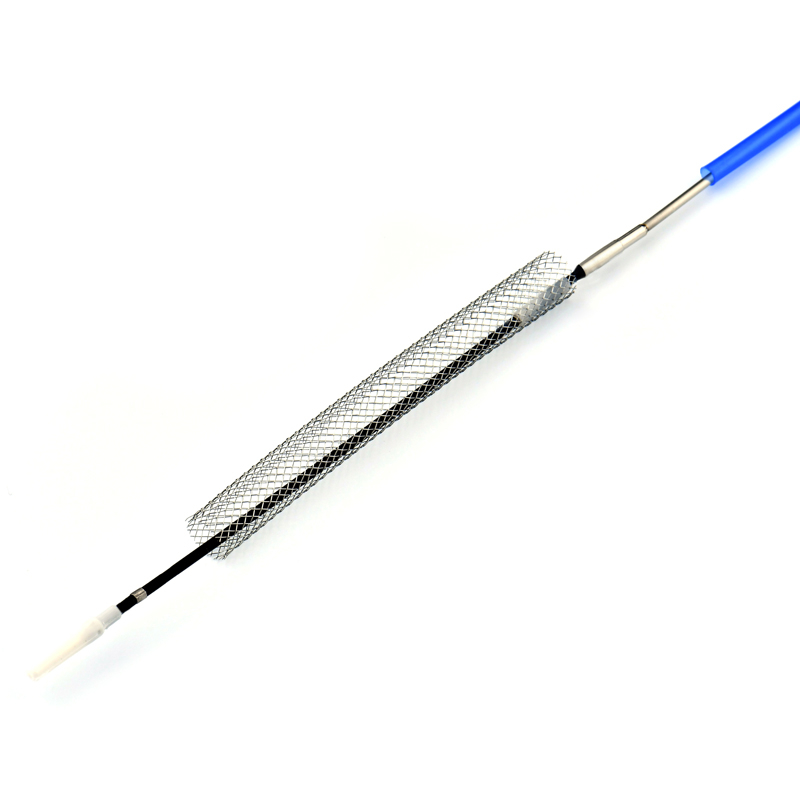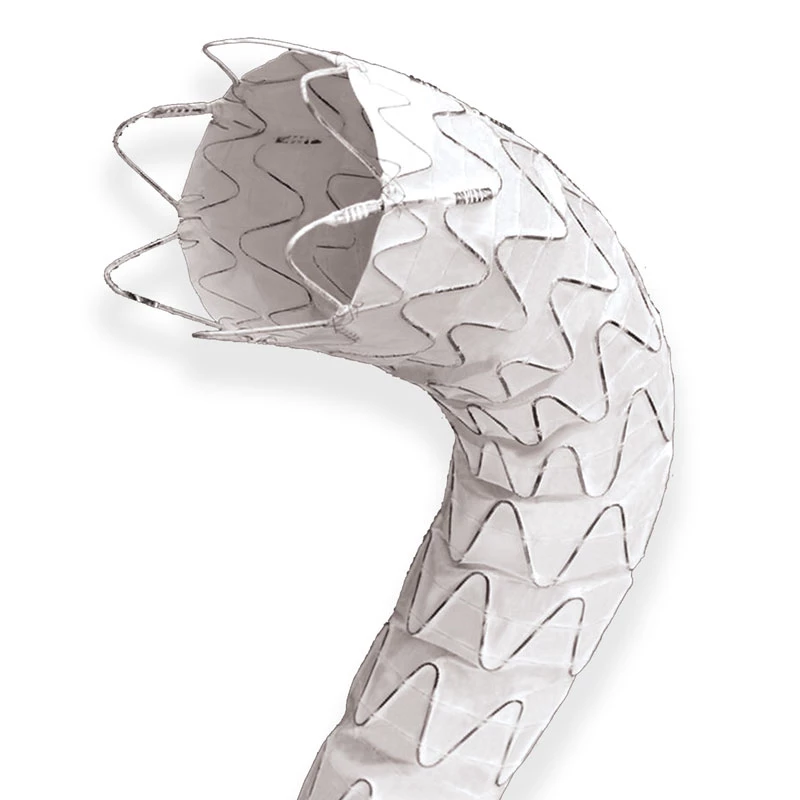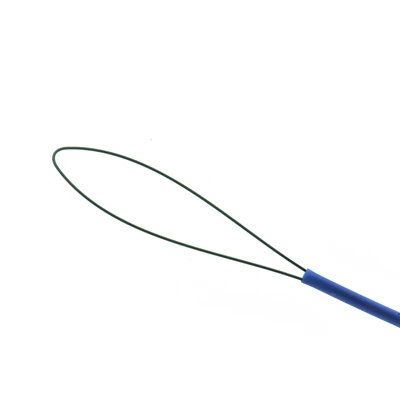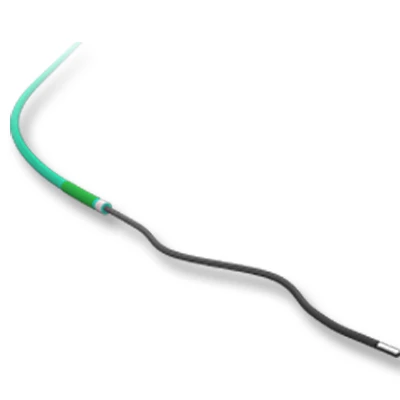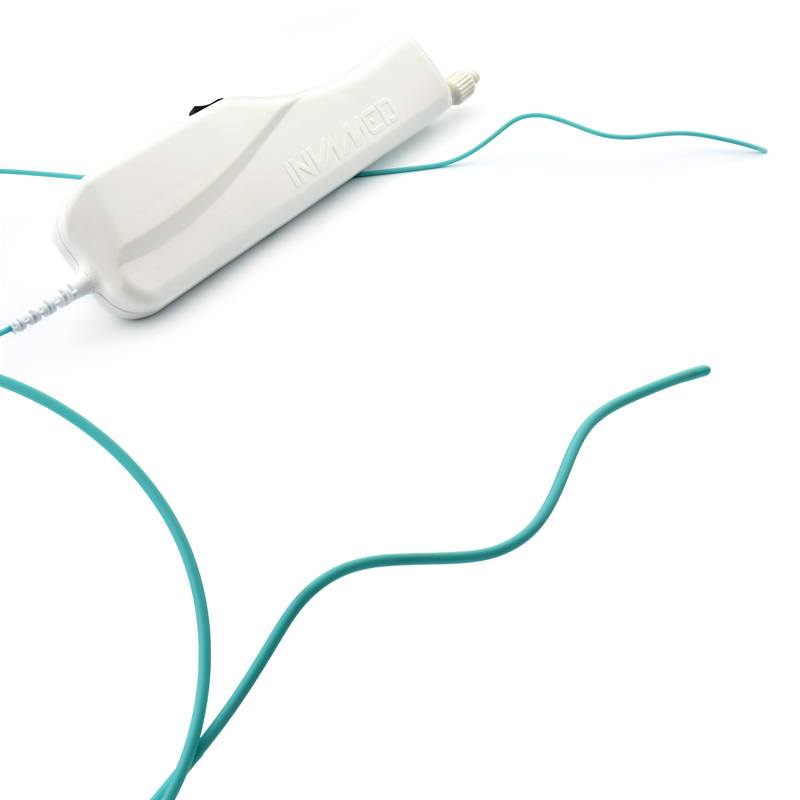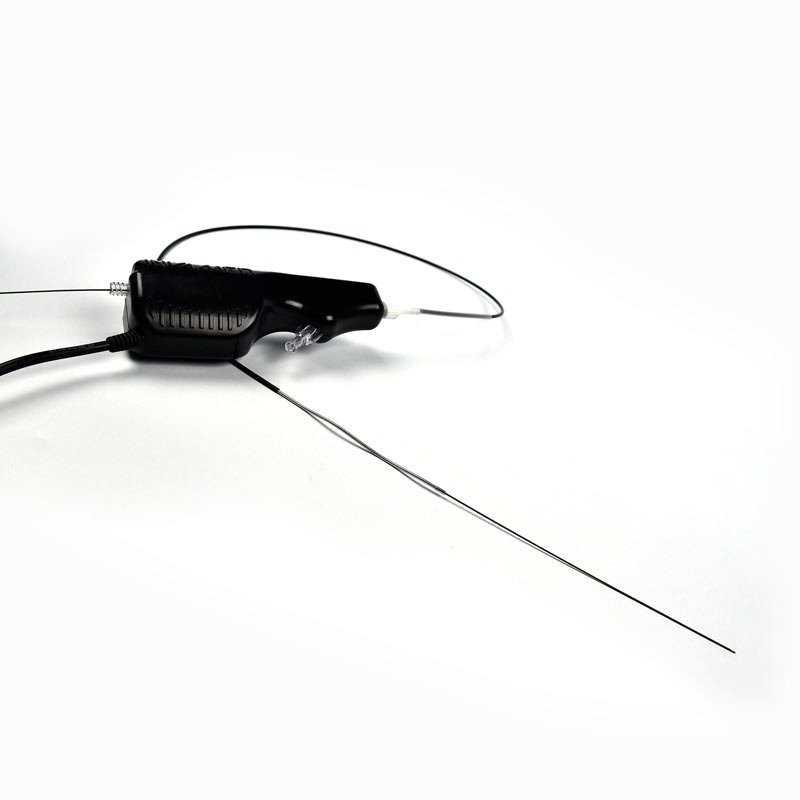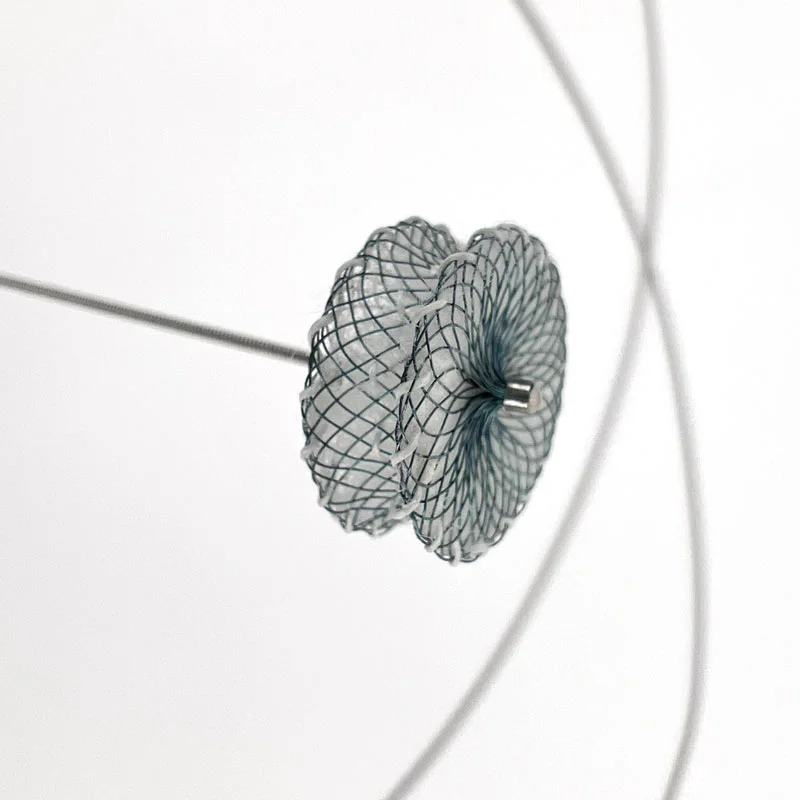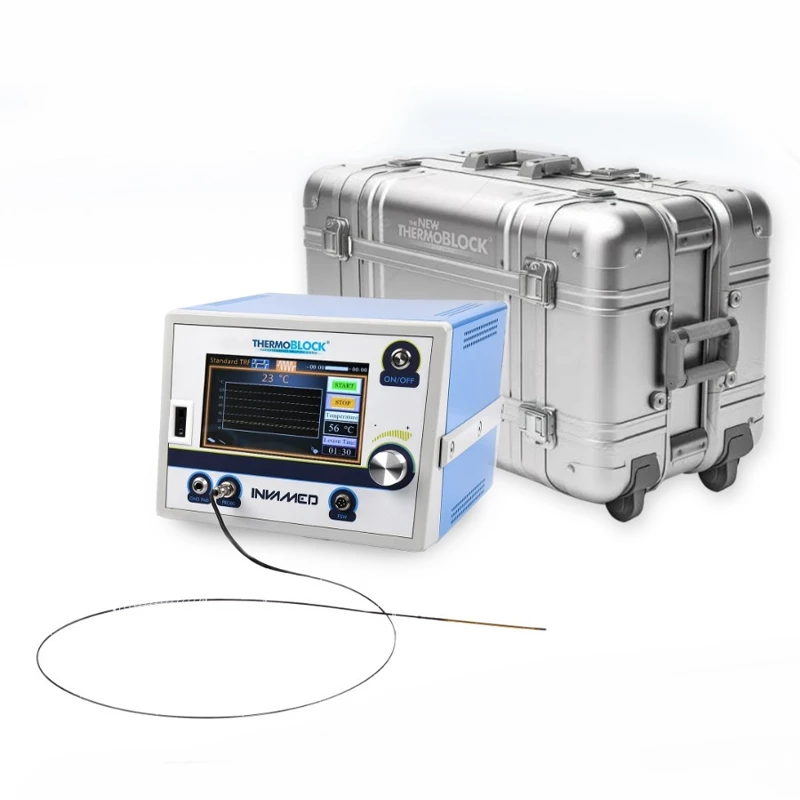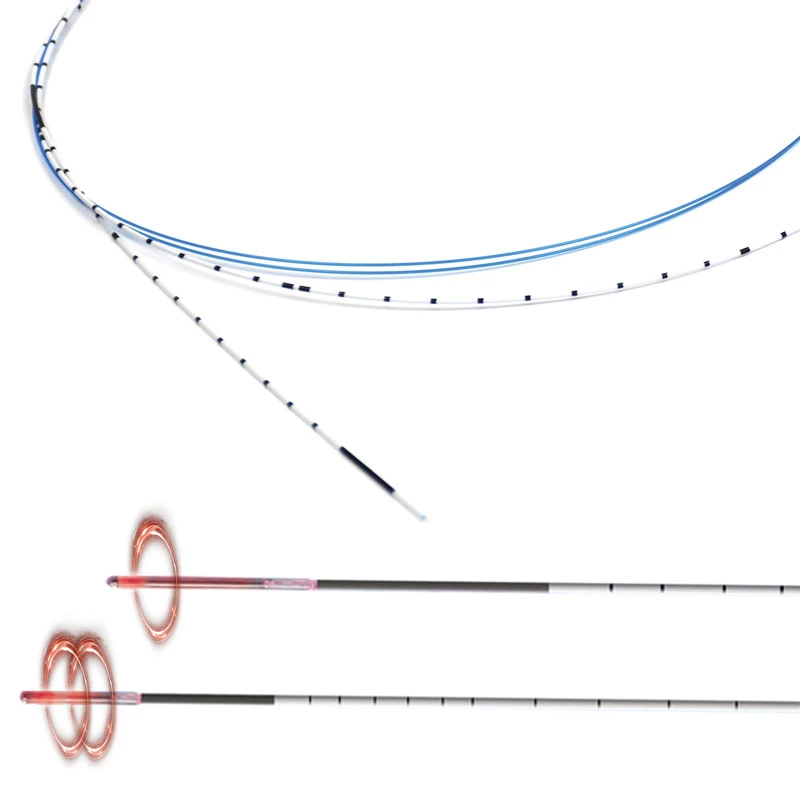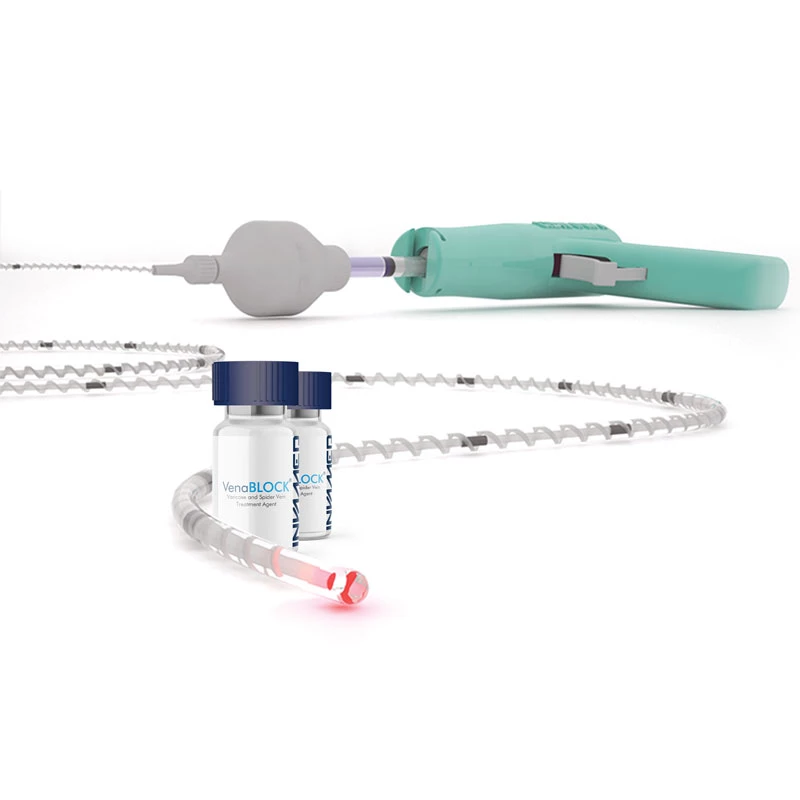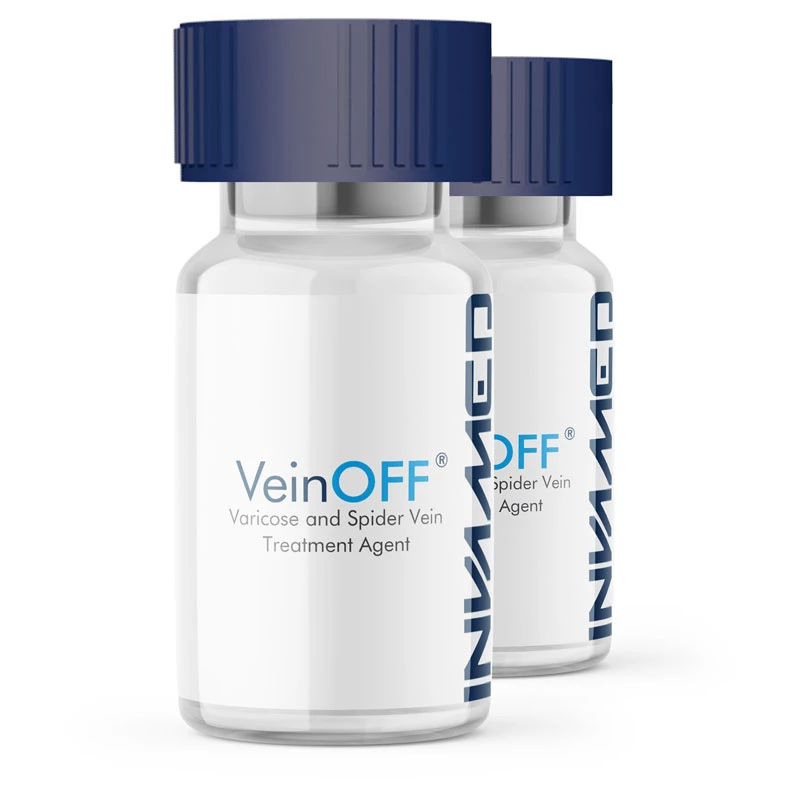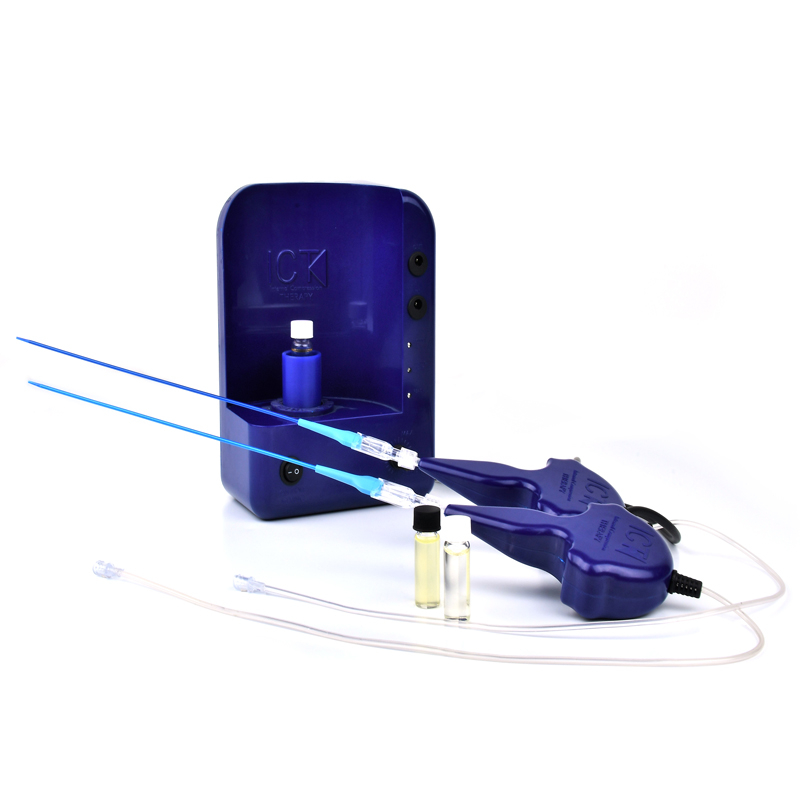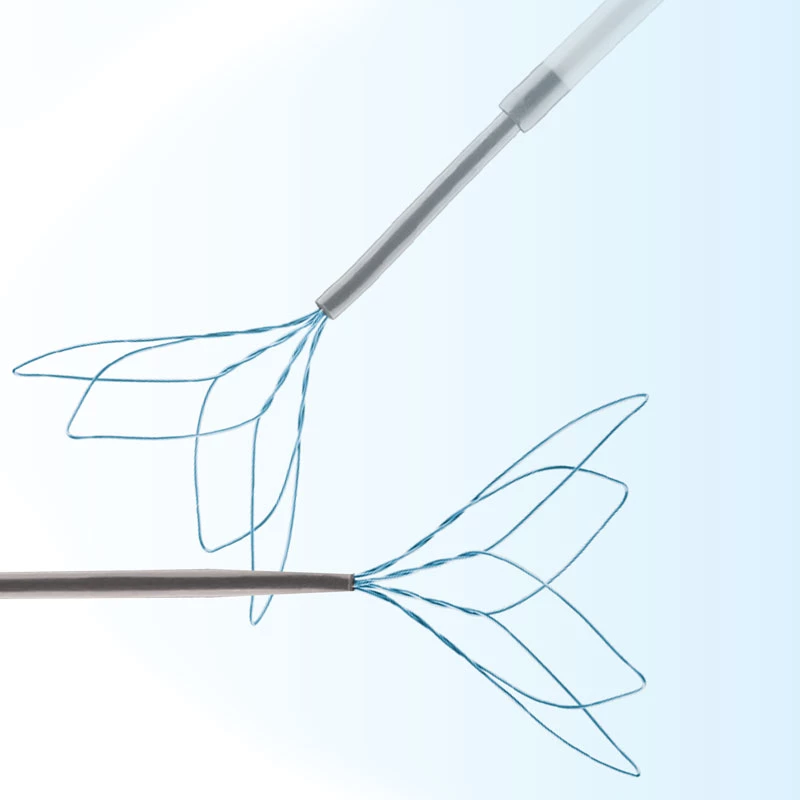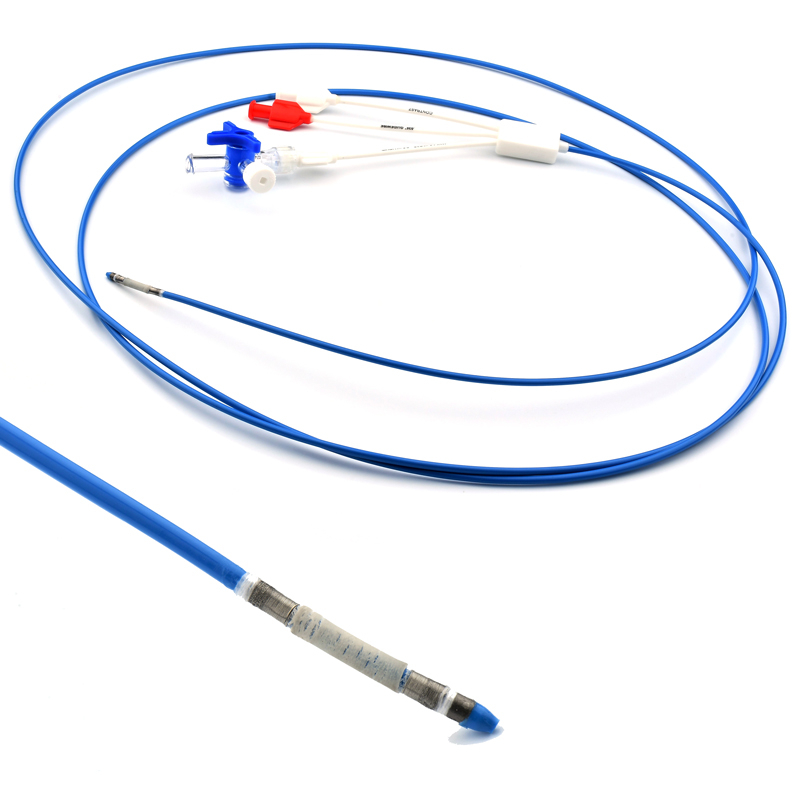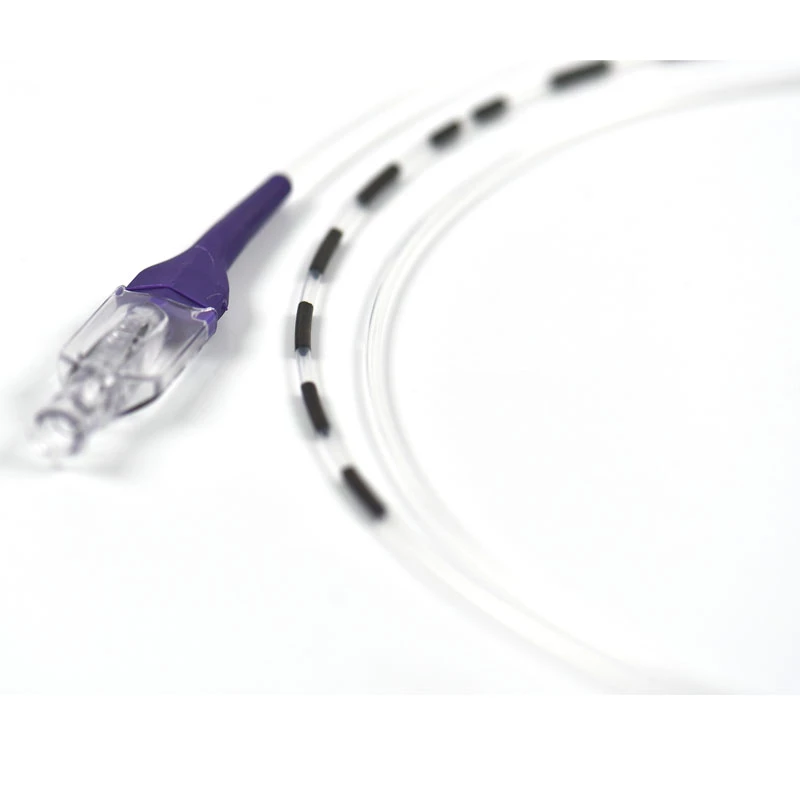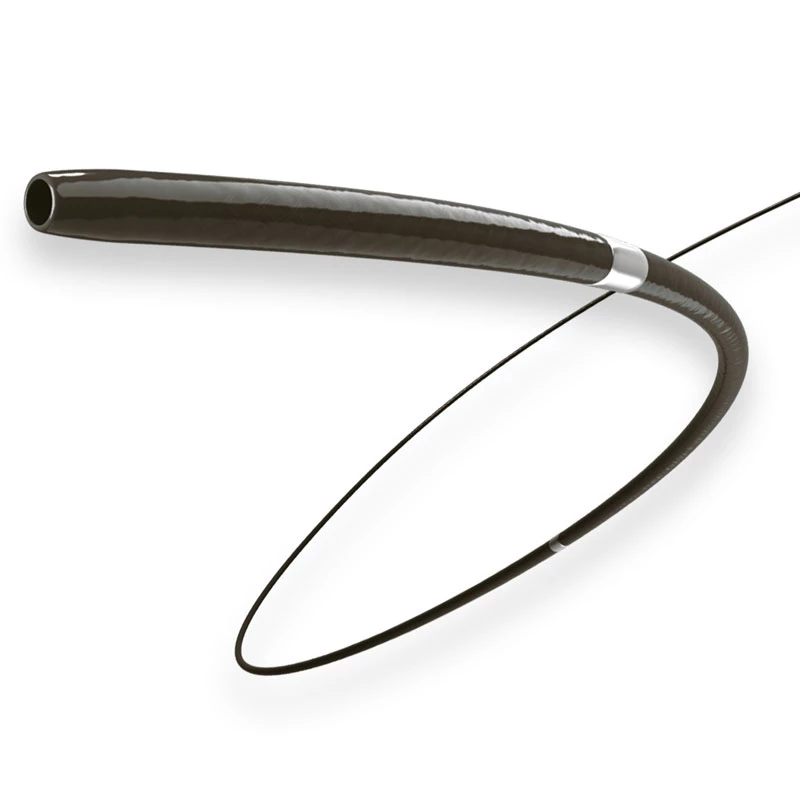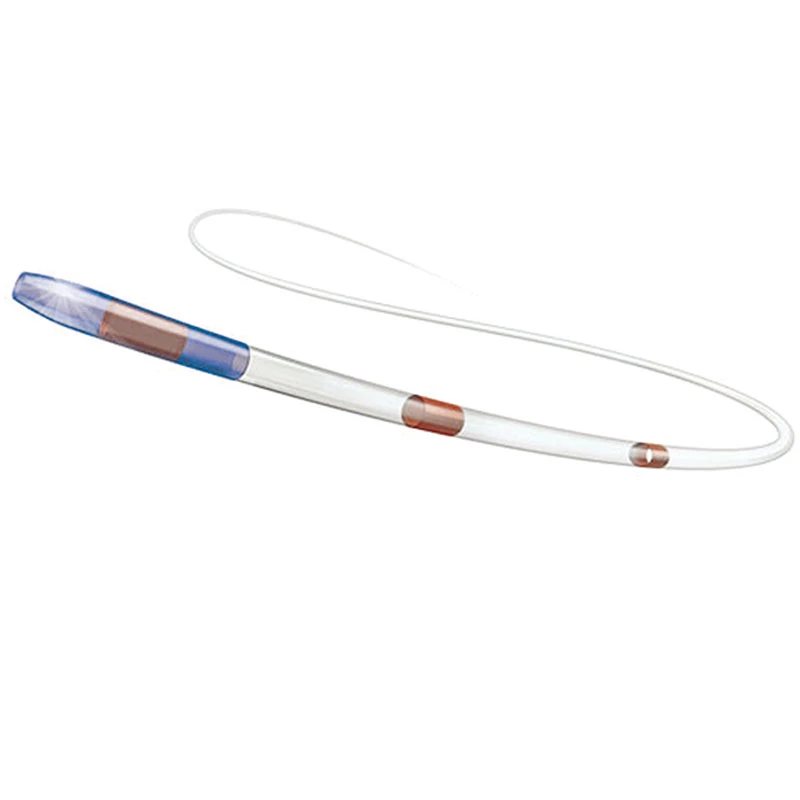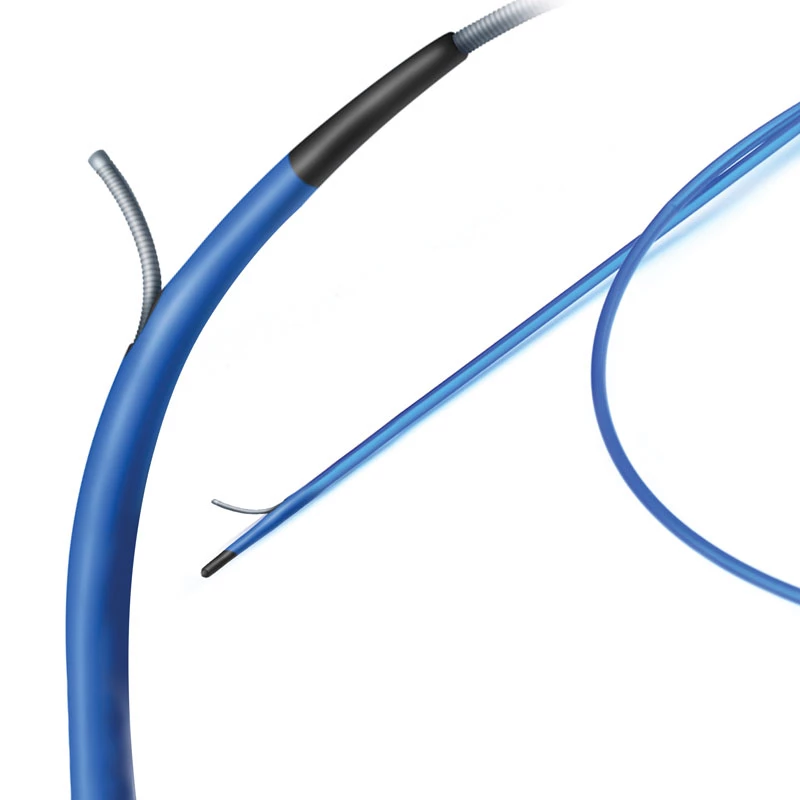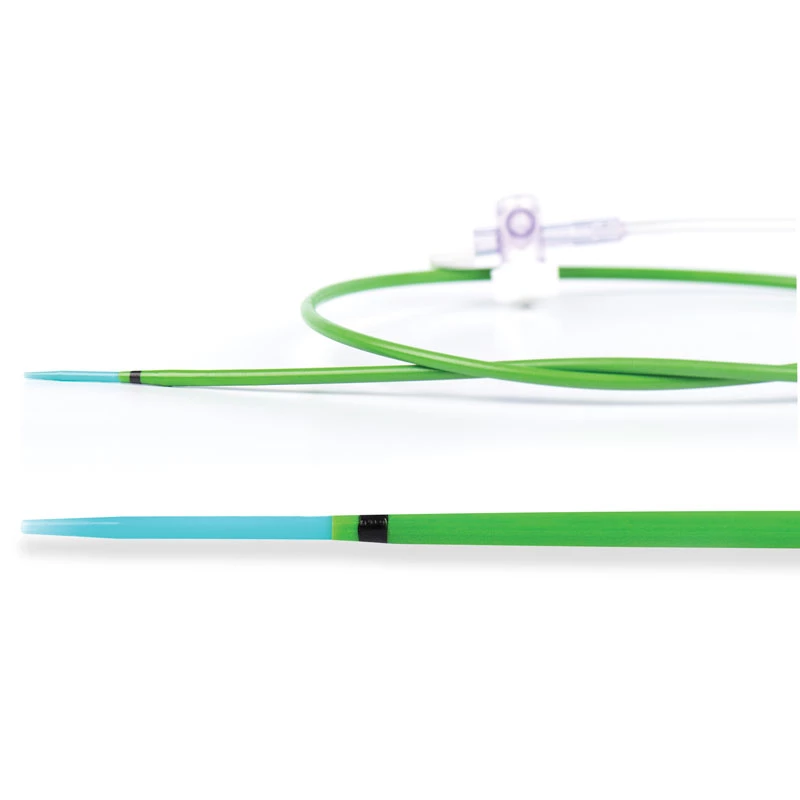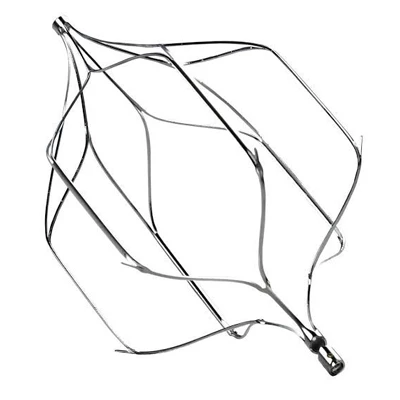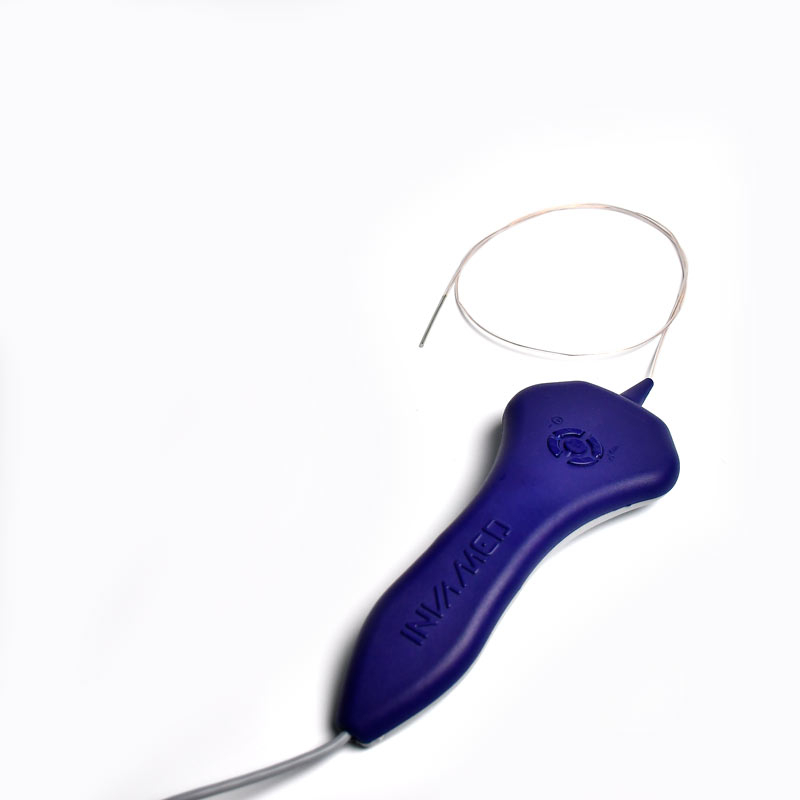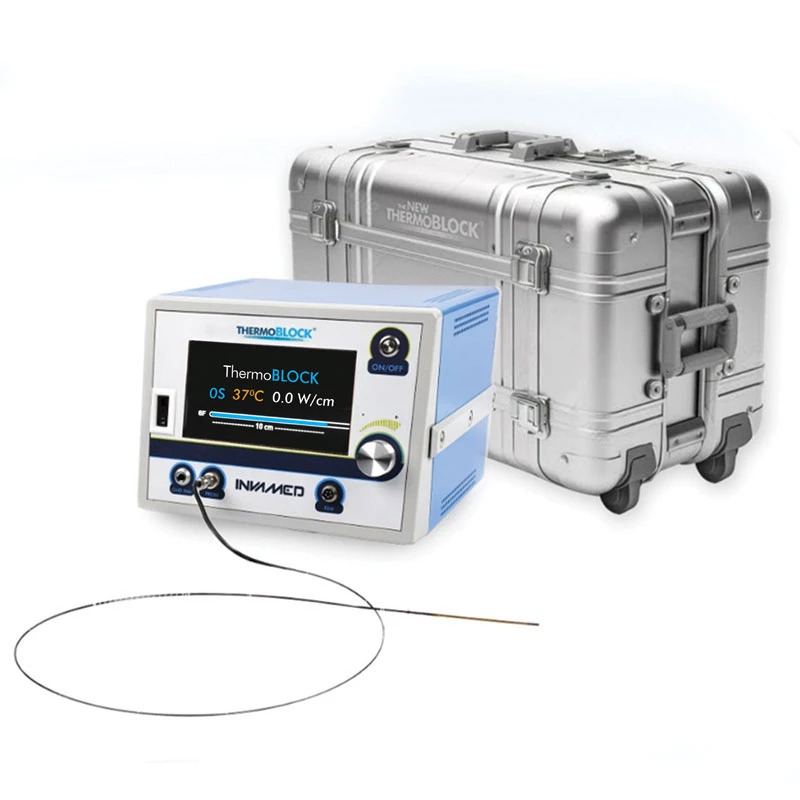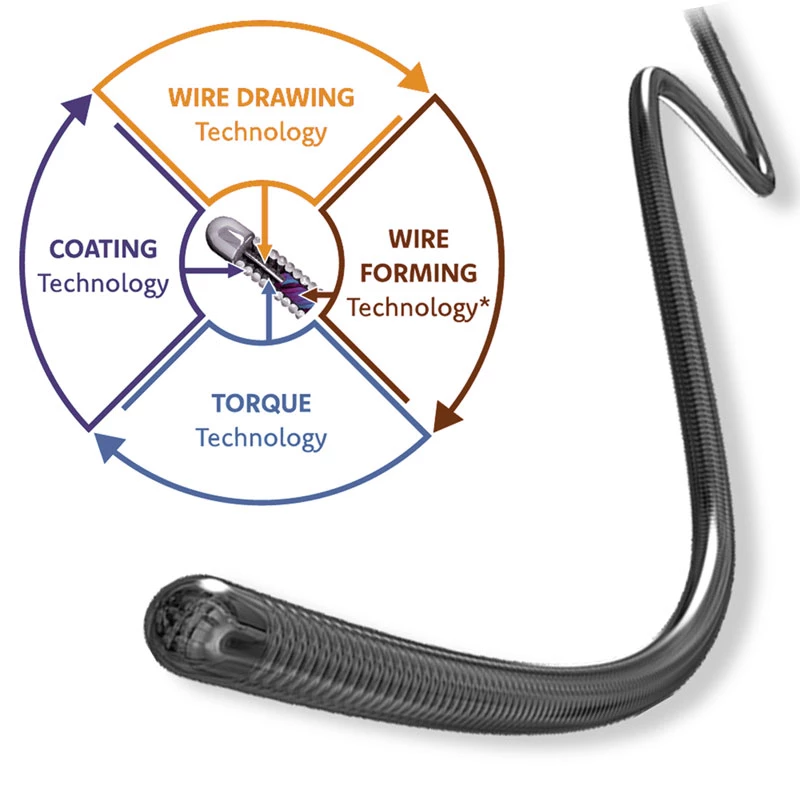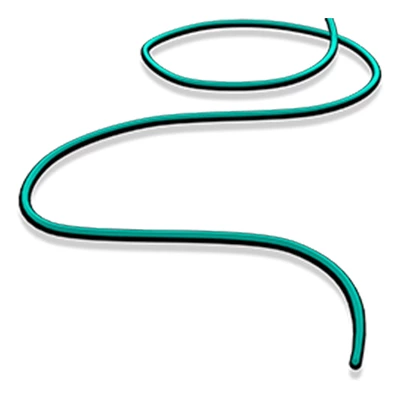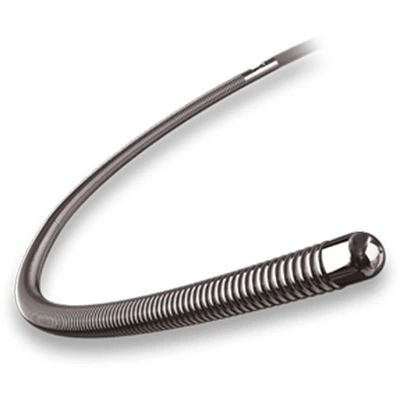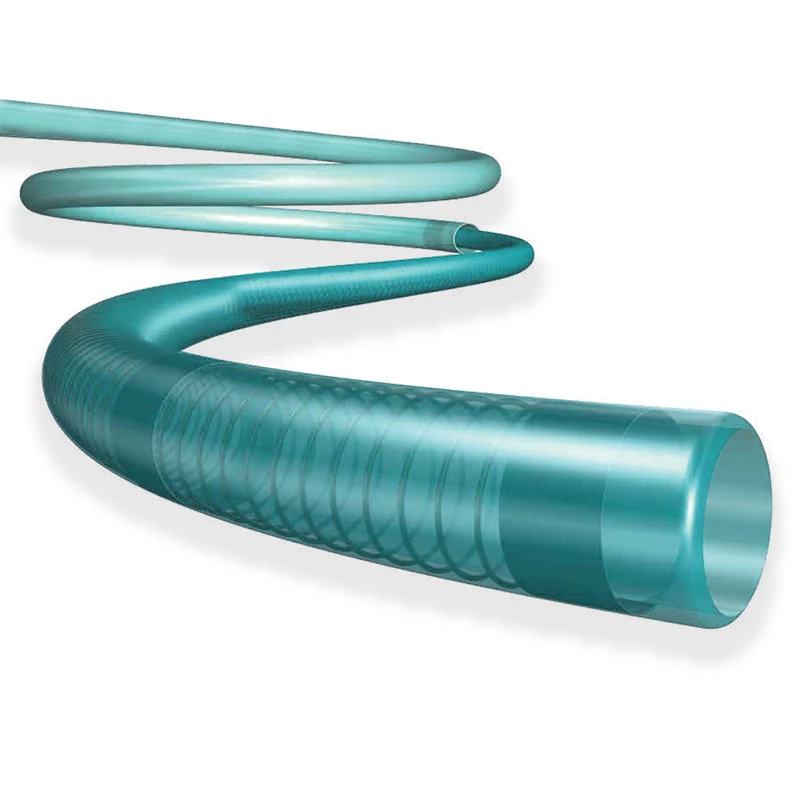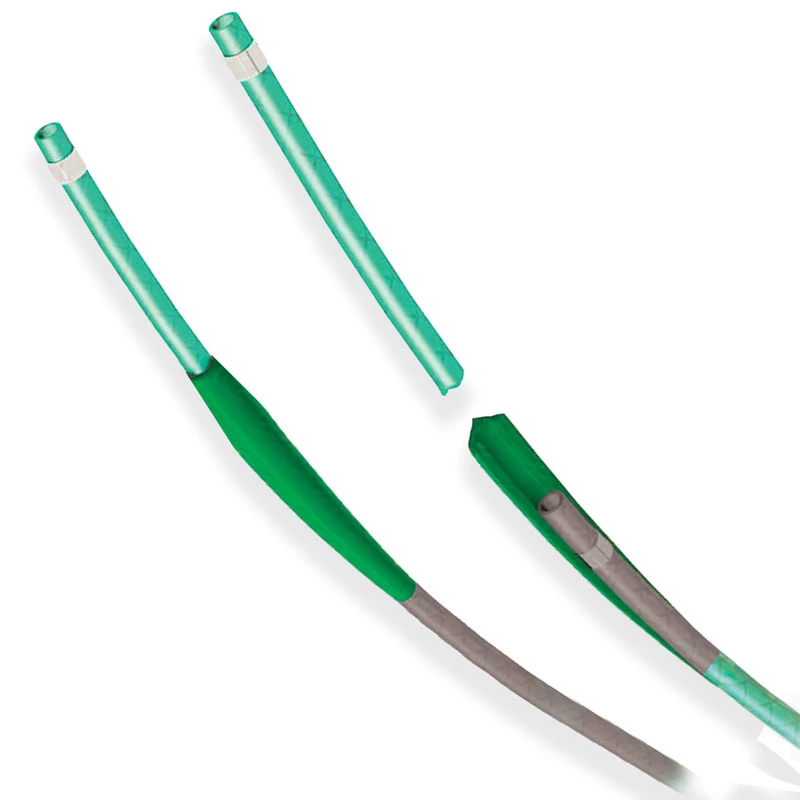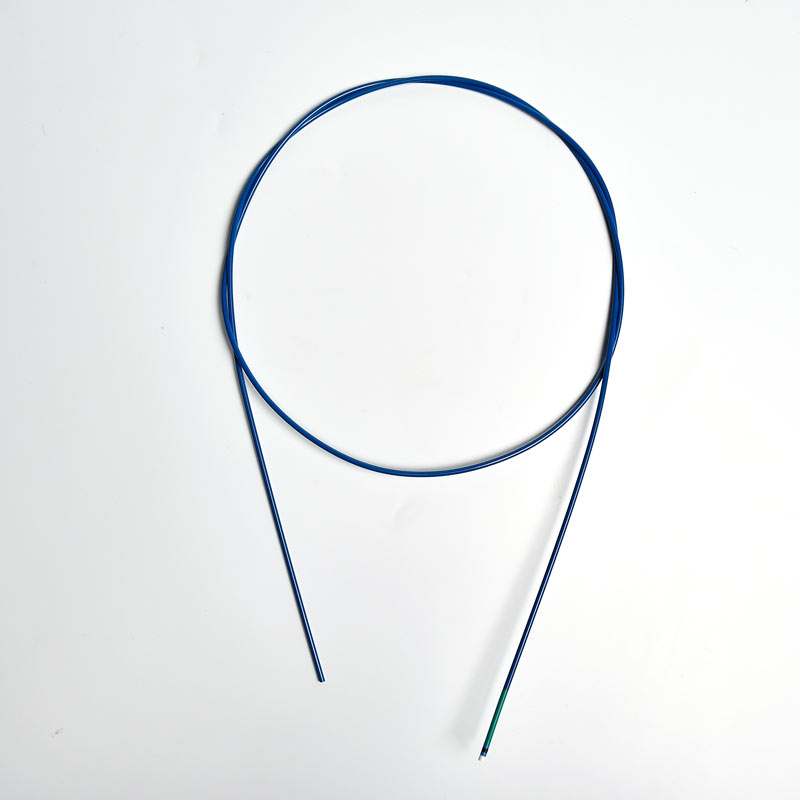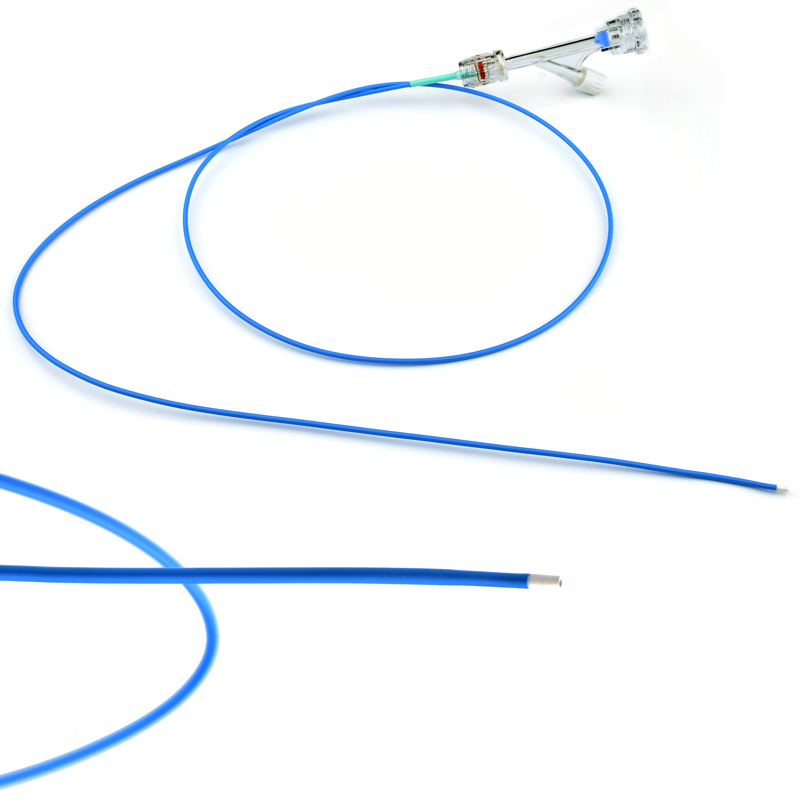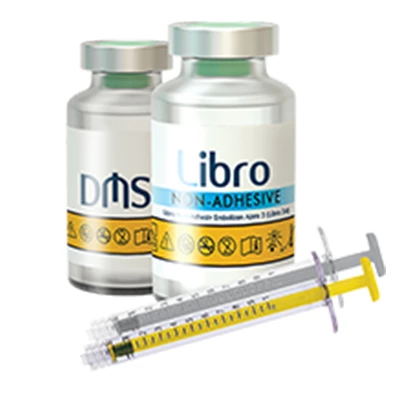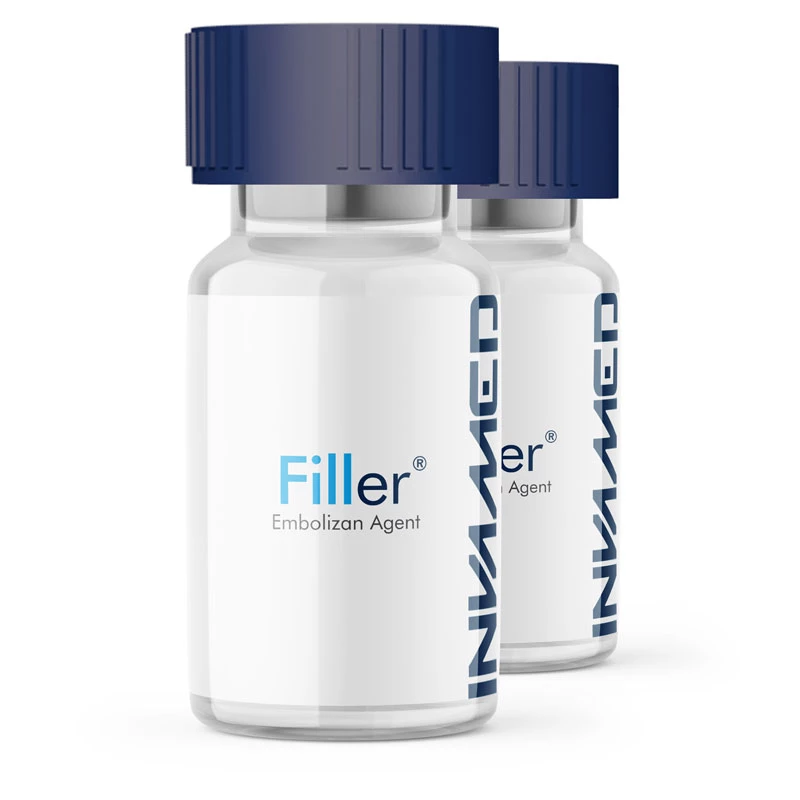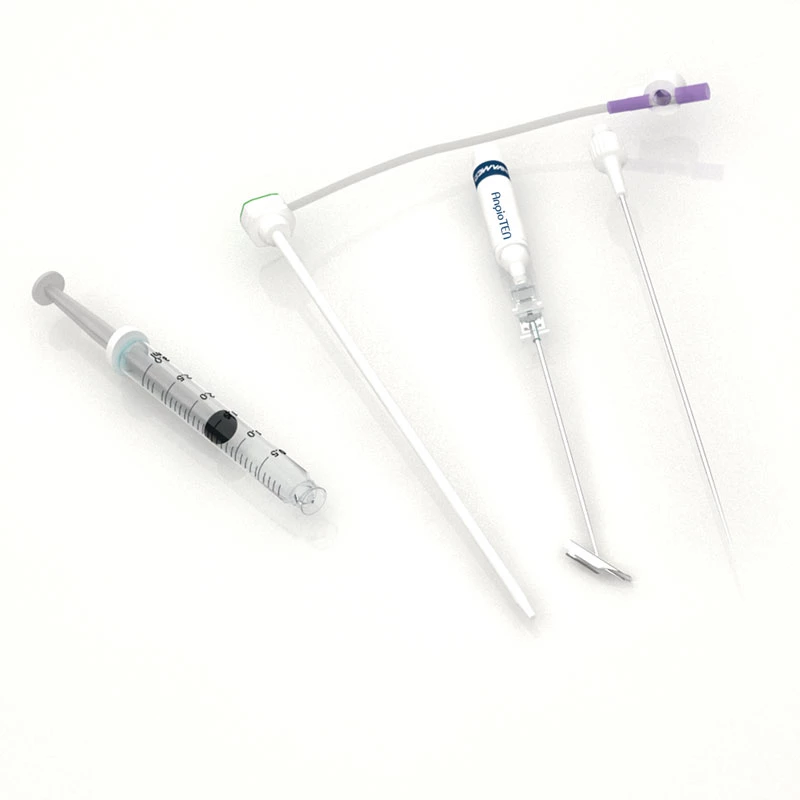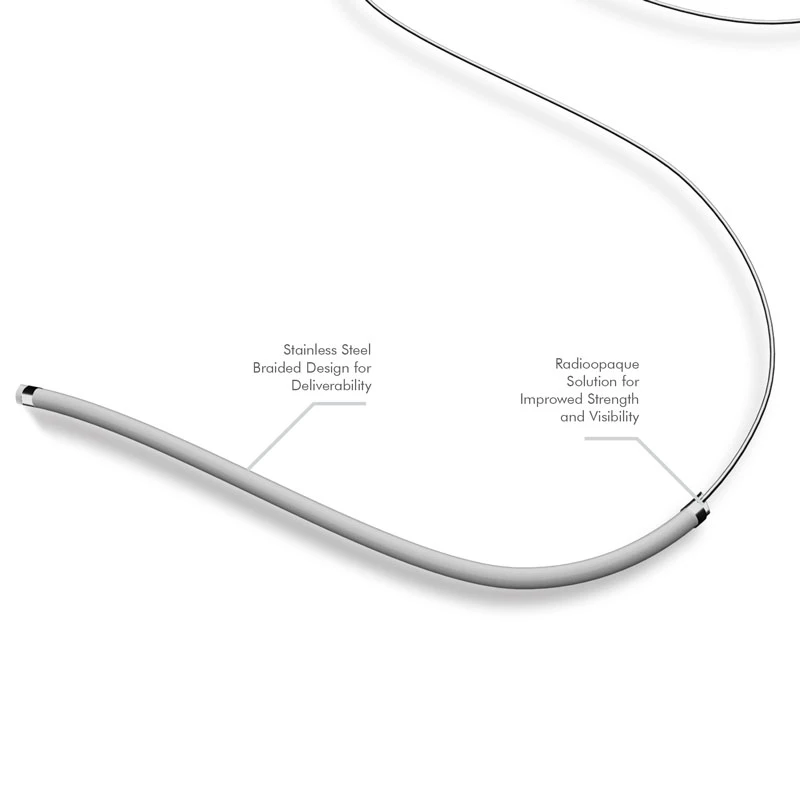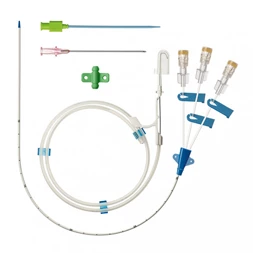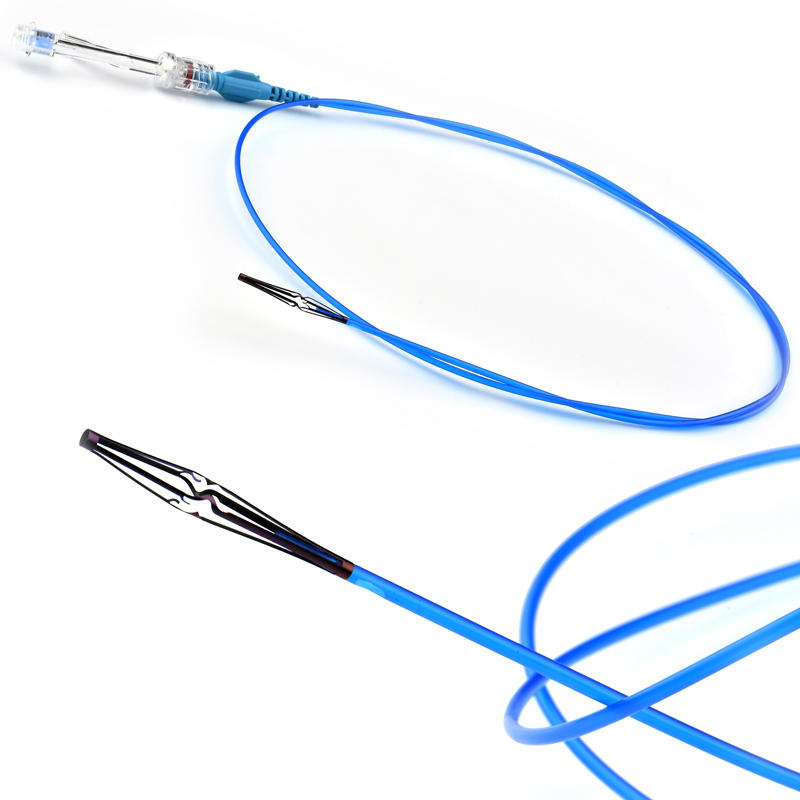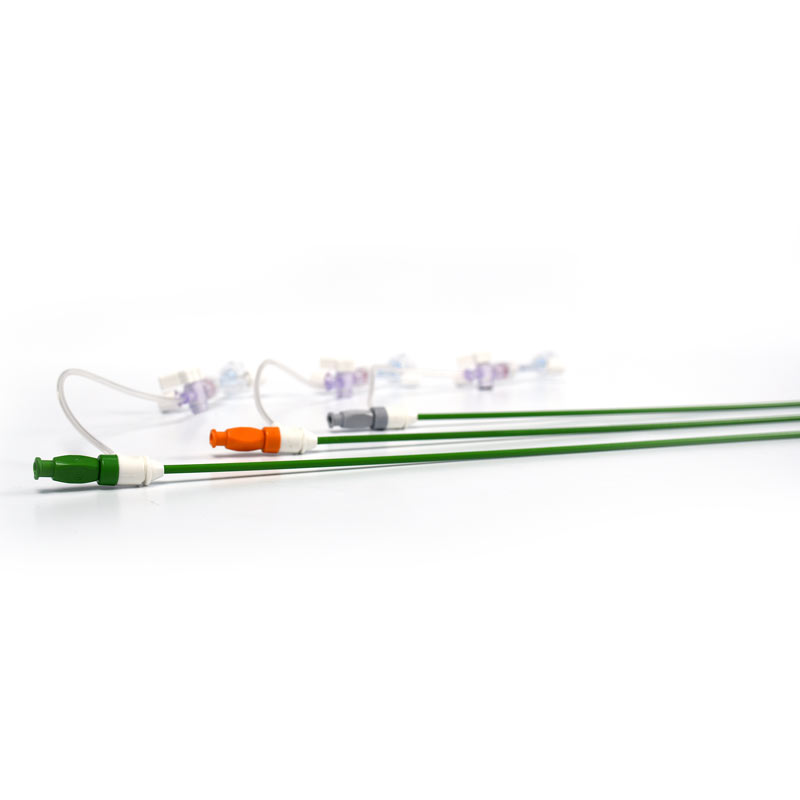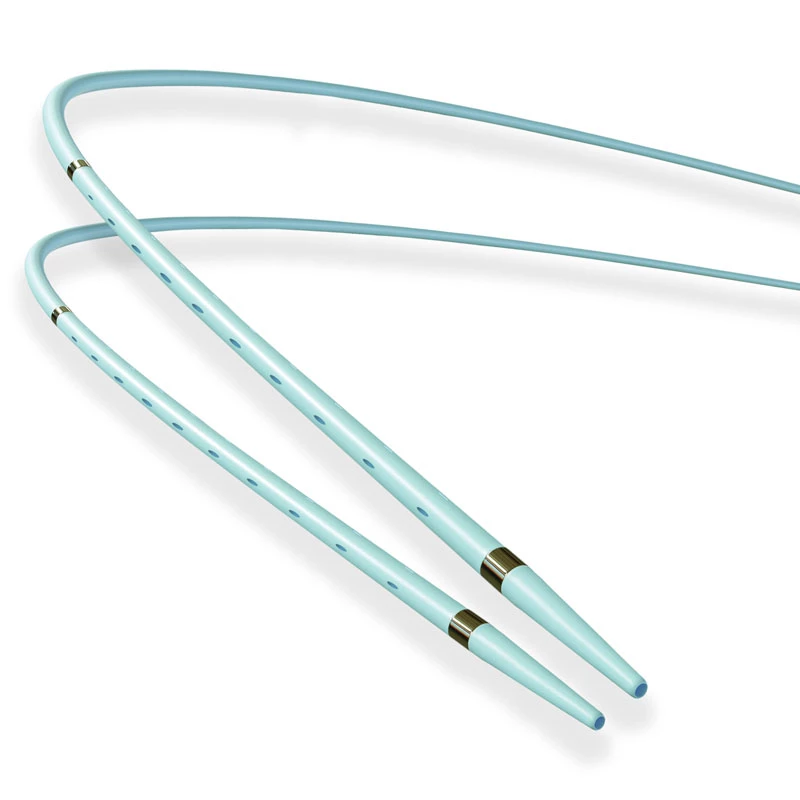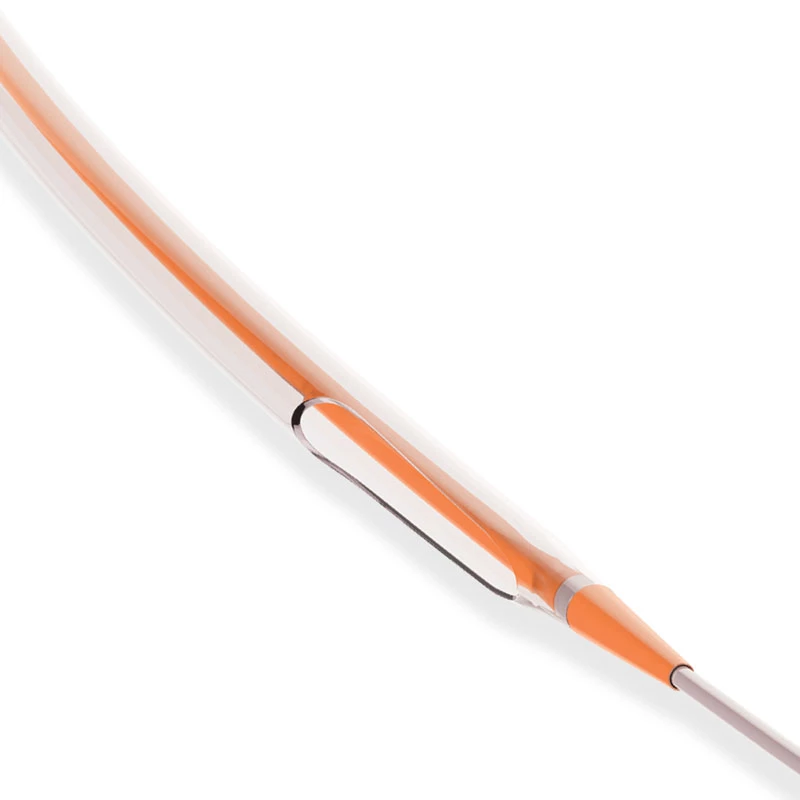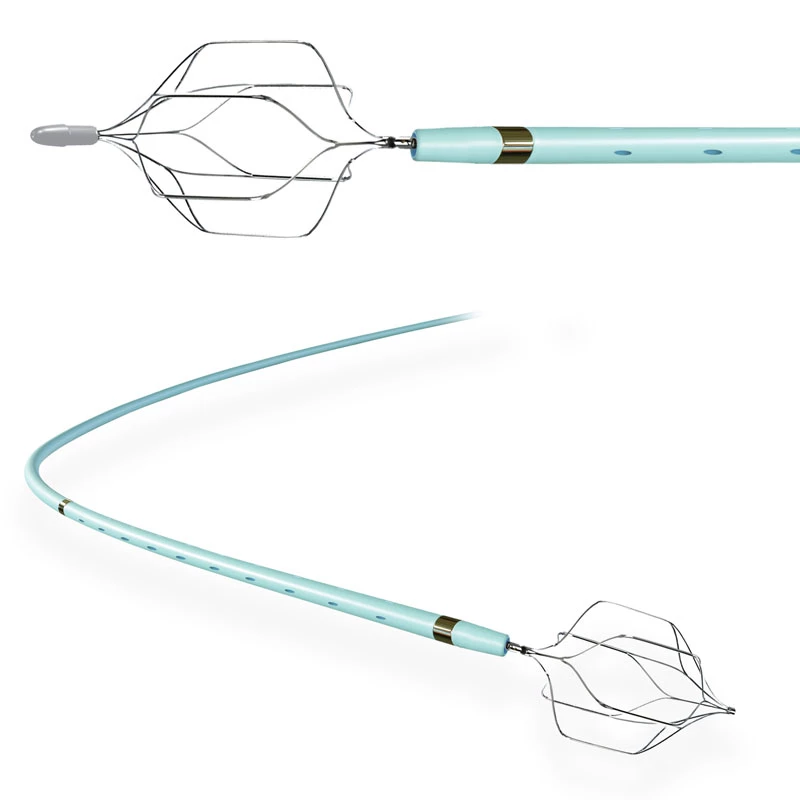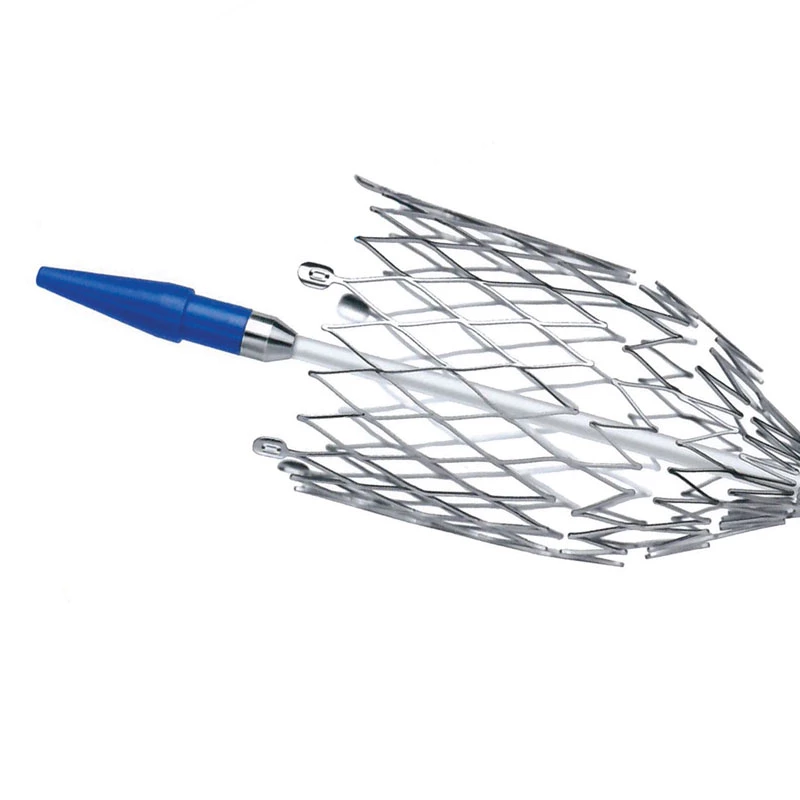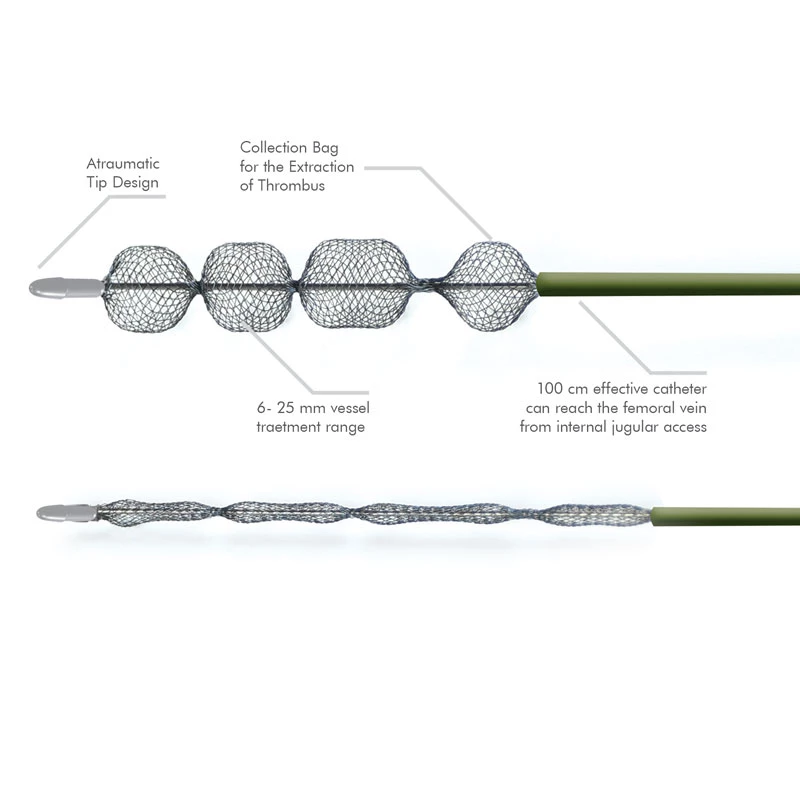TemREN
Atherectomy System
Peripheral arterial disease (PAD) is a clinical manifestation of systemic atherosclerosis and is associated with significant morbidity and mortality. The physiological force and shear stress from angioplasty and stenting have made PAD treatment challenging. TEMREN Atherectomy is a major therapy in the management of peripheral vascular disease.
With atherectomy, the lesion is operated from the distal to the proximal, providing lumen patency and reducing the burden of atherosclerotic plaque.
- Lower extremity arterial stenosis
- CTO
- PAD symptom
- FP lesions
The Temren Atherectomy System has three main components: The Power Adapter, the Temren Catheter and the Temren Handle. The Temren Catheter is a flexible, over-the-wire (OTW), front-cutting Catheter that continuously captures and clears debulked plaque proximally through the Catheter and Handle into a collection reservoir that resides outside the patient. For use, the Temren Catheter is inserted into the Temren Handle. The Handle incorporates a self-contained electrically-powered motor designed to drive and rotate the cutter of the Temren Atherectomy Catheter at its specified rotational speed.
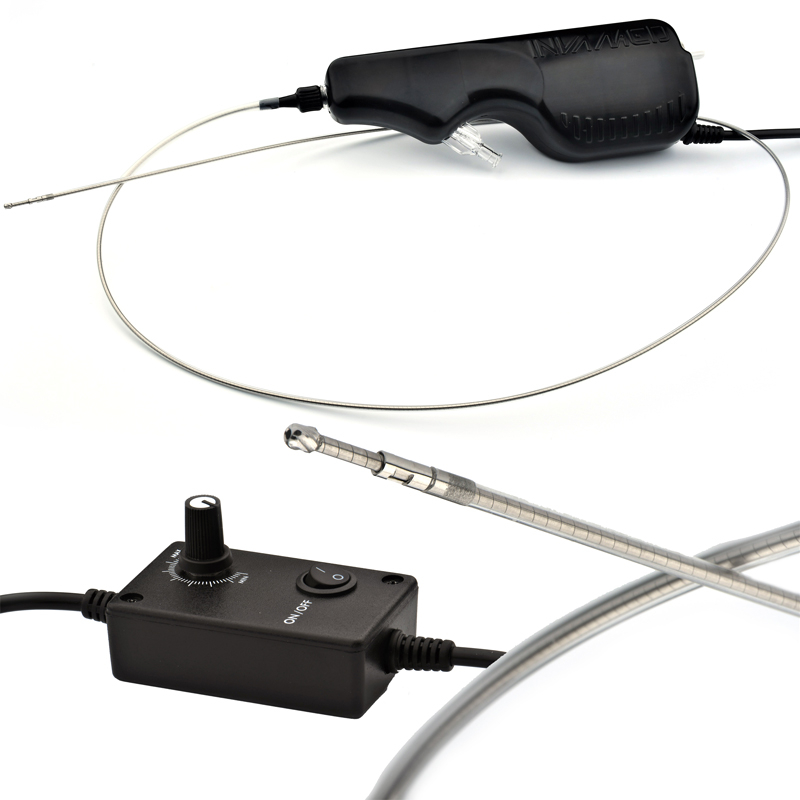
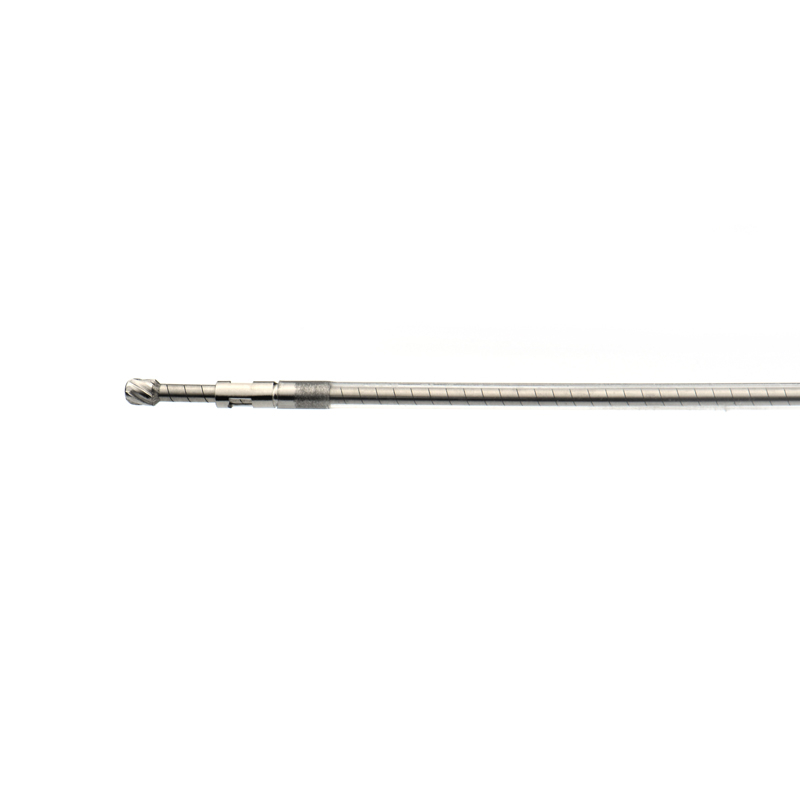
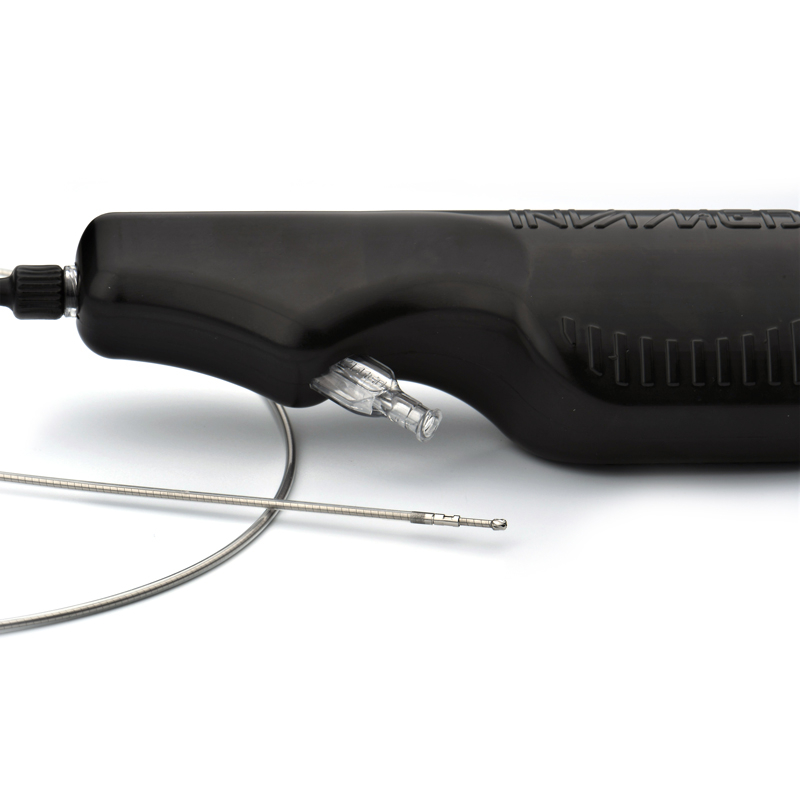
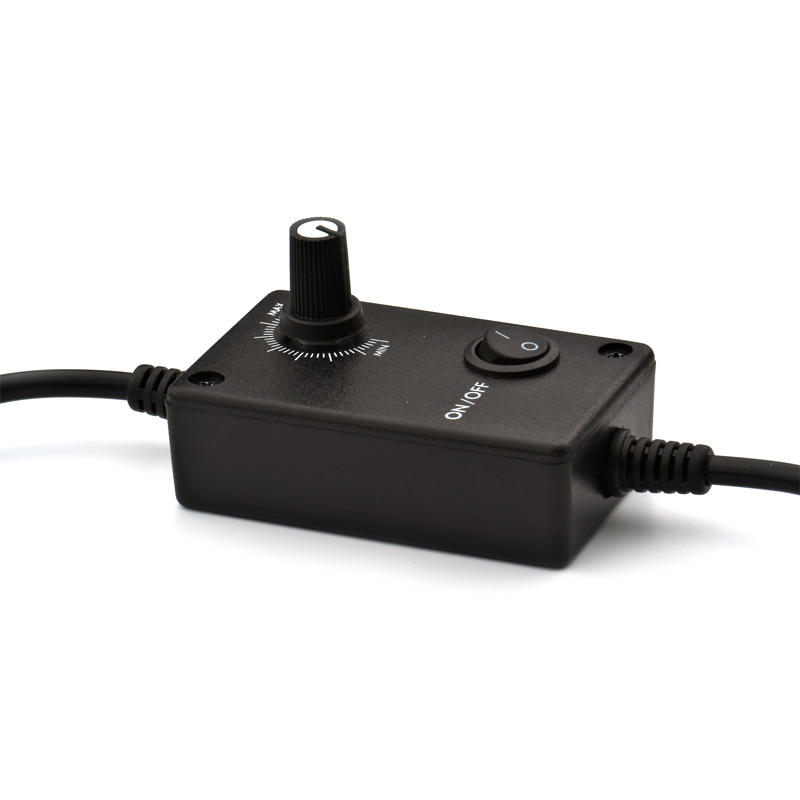
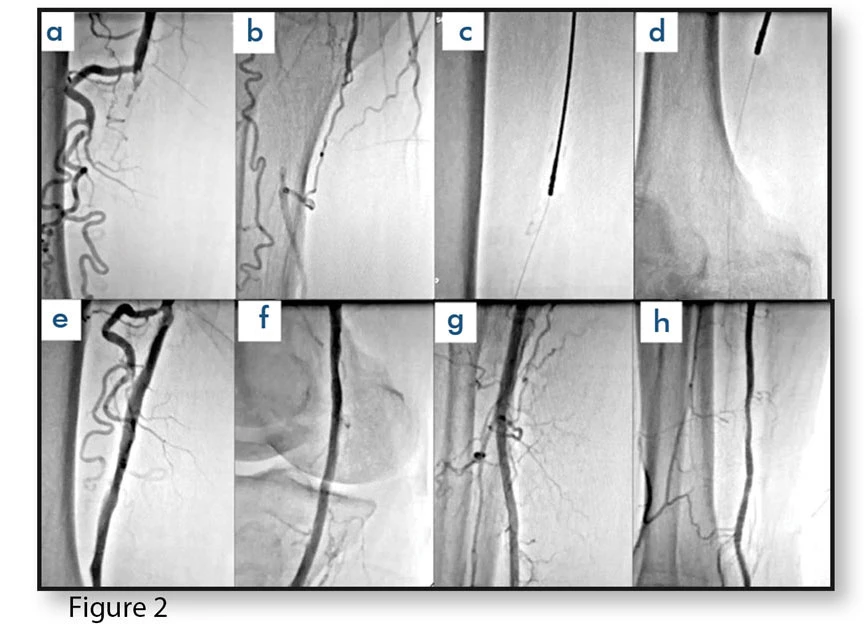
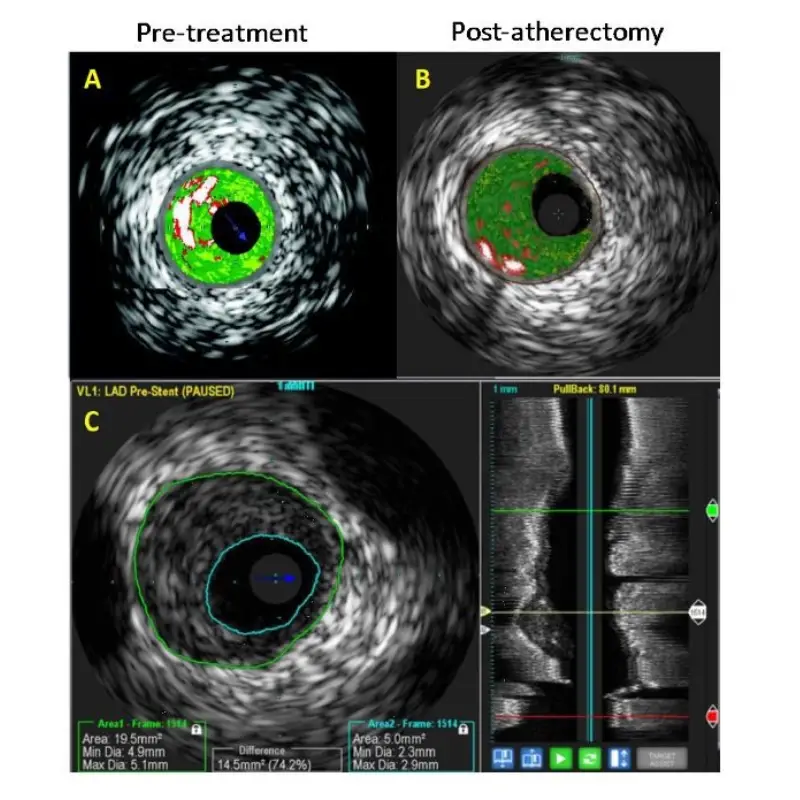






Detailed specifications
TemRENⓇAtherectomy System
Ready-to-use set content provides a practical application option. Easily adjustable rotational mobility provides the surgeon with a safe field of use.
Peripheral arterial disease (PAD) and critical limb ischemia (CLI) treatment TemRENⓇ is used to prepare the lesion area for balloon angioplasty and to relieve the heavy plaque load from atherosclerotic lesions.
TemRENⓇ usually consists of arteries with chronic total occlusions and severe calcification lesions, which are difficult to treat with plaque load with angioplasty.
TemRENⓇ helps to achieve the maximum lumen diameter for stent and balloon procedures.
Atraumatic rotational distal tip ensures reliable operation
- Allows movement over 0.014” guide wire
-
TemRENⓇ transfers torque in a ratio of 1:1 (distal/proximal) thanks to its flexible helical internal structure.
- Atherosclerotic environment, in which the internal spiral aspirates are fragmented by the Archimedean Principle
- Five cutting blades comprehend and treat all morphologies, including severe calcium.
- Provides consistent and predictable cutting without increasing the cutting depth.
- Treat severely calcified lesions up to 2 times more effectively.
- 15000 rpm
- Ready-to-use set content provides a practical application option.
- No October installation equipment is required before operation.
- The rotation speed can be adjusted easily and provides a safe space for the surgeon.
CLINICAL SUCCESS
TemREN Atherectomy device has proven its success in alternative treatments in patients with peripheral artery disease as a result of prospective early and mid-term studies conducted.1 In the studies conducted, it was proved that 92% of the patients who underwent Temren atherectomy achieved an average of 85-90% technical success in the vascular lesion clearance rate, while maintaining this rate up to 70% as a result of 12 months of follow-up.2.3 It was shown that the clinical success rate reached 80% in follow-ups conducted from 1 month to 1 year. With a low complication rate, which is often observed from 3% to 5%, TemREN Atherectomy has proven its reliability and acceptability in the clinic.4
- https://www.sciencedirect.com/science/article/abs/pii/
- https://www.europeanreview.org/wp/wp-content/uploads/
- https://www.jvascsurg.org/article/S0/fulltext
- https://journals.sagepub.com/doi/abs/
- https://www.jvascsurg.org/article/S5/fulltext
- https://www.jvascsurg.org/article/S4/fulltext
Figure 1 - A.Pre-atherectomy and B.Post Atherectomy
Figure 2 - Vascular image during the atherectomy procedure
Advantages of Temren Atherectomy
Provides the possibility of recanalization without disturbing the elastic recoil
By reducing plaque load, it contributes to longer-term primary and secondary clearance rates
The right to stent and surgical bypass is always reserved for the patient unless there are complications.
Patency rates in calcific lesions are higher than in primary stenting
TemREN Rotational Atherectomy , which at the same time aspirates the broken plaque pieces with the vortex effect while operating and prevents distal embolization.
Rotation speed can be adjusted easily and provide safe space to surgeon.
- Method of IVUS analysis of calcium reduction. Pre-treatment IVUS (A), and the corresponding post-atherectomy IVUS (B).
- The analysis sequence is shown at the bottom.
- After identifying and matching the slices with calcium reduction, the lumen borders for both pretreatment (blue circle: lumen area=5.0 mm2) (C) and post-atherectomy images (green circle: lumen area=19.5 mm2 ) were contoured; and the two were overlaid. By comparing the two contours to the visual assessment of plaque, lumen gain (14.5 mm2) could be attributed automatically.
Consistent Solution For Peripheral Arterial Disease
Ready to use set content provides a practical application option.
No additional installition equipment required before the process.
Rotation speed can be adjusted easily and provide safe space to surgeon
| Order Number | Device outer diameter | Working Length | Crossing Profile | Guidewire Compatibility |
| VS1021 | 5.0 Fr | 90 cm | 1.8 | 0.014" |
| VS1022 | 6.0 Fr | 90 cm | 2.1 | 0.014" |
| VS1023 | 7.0 Fr | 90 cm | 2.4 | 0.018" |
| VS1024 | 5.0 Fr | 135 cm | 1.8 | 0.014" |
| VS1025 | 6.0 Fr | 135 cm | 2.1 | 0.014" |
| VS1026 | 7.0 Fr | 135 cm | 2.4 | 0.018" |
| VS1027 | 5.0 Fr | 150 cm | 1.8 | 0.014" |
| VS1028 | 6.0 Fr | 150 cm | 2.1 | 0.014" |
| VS1029 | 7.0 Fr | 150 cm | 2.4 | 0.018" |

